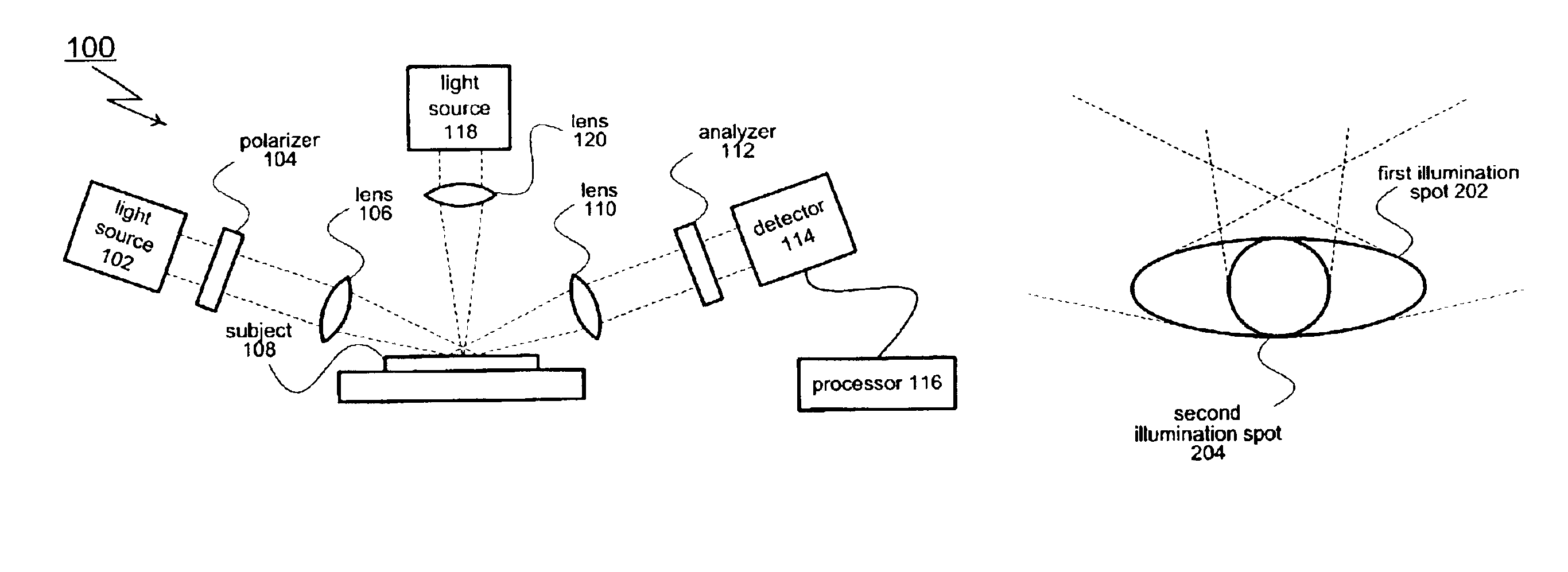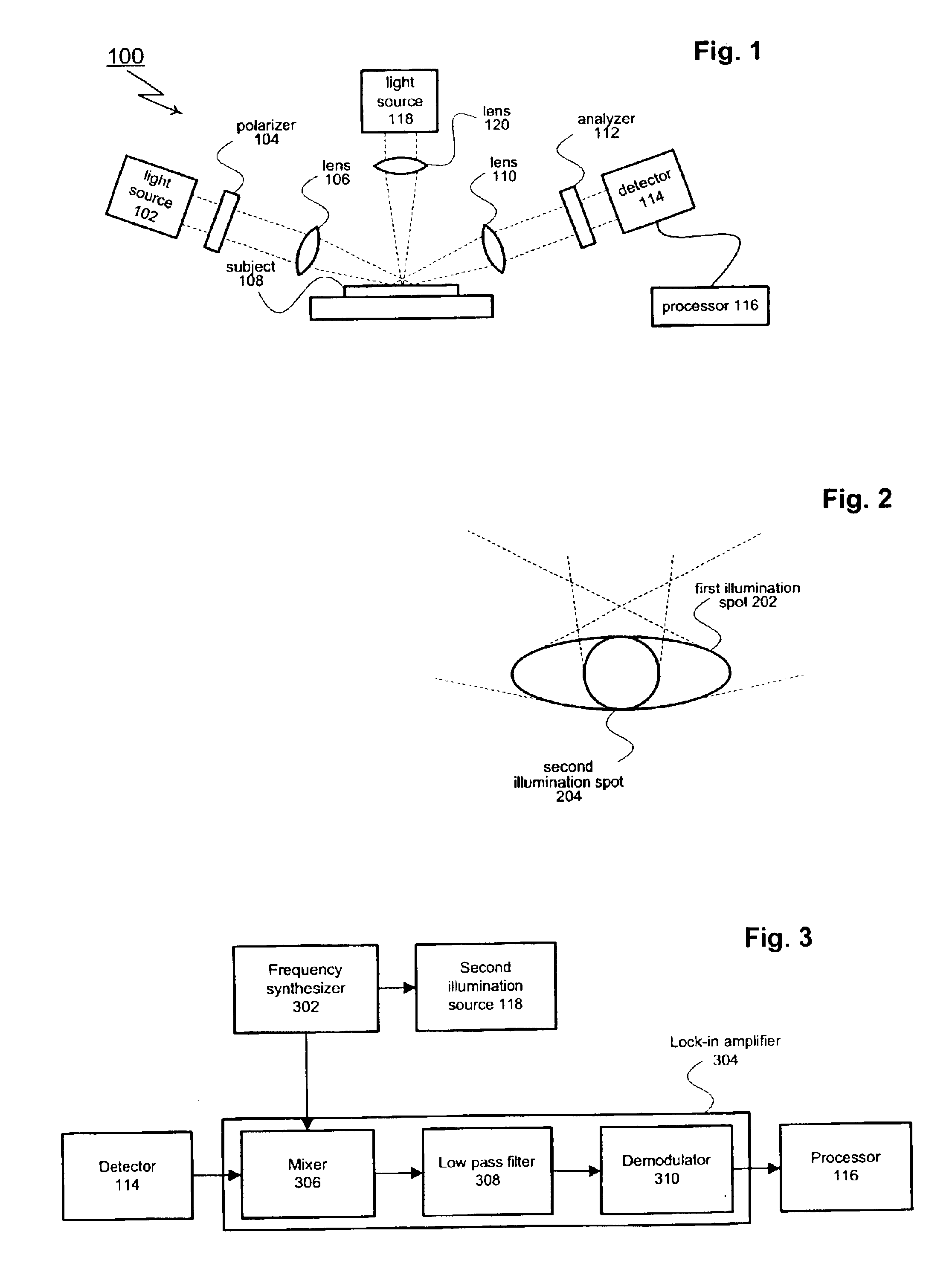System for performing ellipsometry using an auxiliary pump beam to reduce effective measurement spot size
a technology of ellipsometry and auxiliary pump, applied in the field of ellipsometry systems, can solve the problems of chromatic aberration, limit reduction of measurement spot size, and inability to reduce measurement size, etc., and achieve the effect of effective small measurement spo
- Summary
- Abstract
- Description
- Claims
- Application Information
AI Technical Summary
Benefits of technology
Problems solved by technology
Method used
Image
Examples
Embodiment Construction
[0017]As shown in FIG. 1, an aspect of the present invention includes an ellipsometer generally designated 100. Ellipsometer 100 includes a first illumination source 102 that creates a mono or polychromatic probe beam. The probe beam is passed through a polarizer 104 and focused by one or more lenses 106 (or other appropriate optical elements such as mirrors). Polarizer 104 imparts a known polarization state to the probe beam. The polarized probe beam creates an illumination spot on the surface of the subject under test 108. An image of the illumination spot (or a portion of the illumination spot) passes through one or more lenses 110 and an analyzer 112 before reaching a detector 114. Lenses 110 may be selected from a range of different components including achromatic lenses and focusing mirrors. Detector 114 captures (or otherwise processes) the received image. A processor 116 analyzes the data collected by the detector 114.
[0018]Ellipsometer 100 also includes a second illuminatio...
PUM
| Property | Measurement | Unit |
|---|---|---|
| angle of incidence | aaaaa | aaaaa |
| reflectivity | aaaaa | aaaaa |
| polarity | aaaaa | aaaaa |
Abstract
Description
Claims
Application Information
 Login to View More
Login to View More - R&D
- Intellectual Property
- Life Sciences
- Materials
- Tech Scout
- Unparalleled Data Quality
- Higher Quality Content
- 60% Fewer Hallucinations
Browse by: Latest US Patents, China's latest patents, Technical Efficacy Thesaurus, Application Domain, Technology Topic, Popular Technical Reports.
© 2025 PatSnap. All rights reserved.Legal|Privacy policy|Modern Slavery Act Transparency Statement|Sitemap|About US| Contact US: help@patsnap.com


